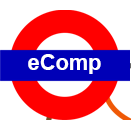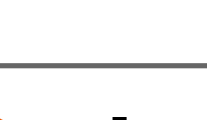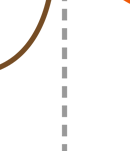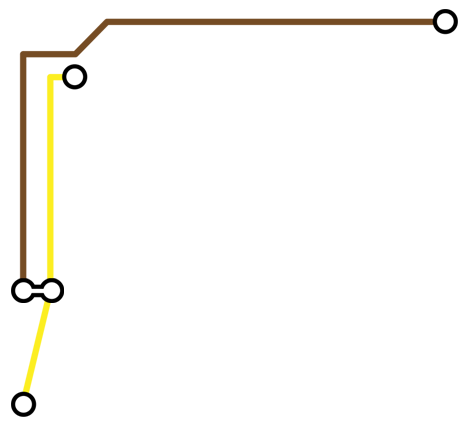Origins
My first encounter with online teaching happened two years ago, in a graduate course on teaching literature, when a few professors came into class to give presentations about teaching composition and literature courses online. Prior to these presentations, I had very little exposure to multimodal or online pedagogy, owing to the fact that there are very few opportunities to teach literature online, nor is there a significant push for teaching multimodal or digital approaches to literary scholarship in a field that tends to privilege a singular semiotic mode: that of the word-based text. Nevertheless, the presentations I witnessed in the teaching literature course forced me to consider the fact that 21st century students “move more fluidly among words, sounds and images” as they engage texts, including literary texts, through digital and multimodal mediums like the ebook, digital archives, blog sites, Youtube, and podcasts (Journet, 2007, p. 107). It became very apparent to me that I needed to consider more seriously the idea of incorporating multimodalities into my curriculum. I also realized during these presentations that online courses are increasingly more prevalent in all academic fields, and thus experience in online teaching is a valuable pedagogical tool for any 21st century college or university instructor. As a result, I desired to expand my “toolbox” of instructional knowledge and experience by seeking out opportunities to learn more about multimodal pedagogy and online teaching.
Experience
My training in online and multimodal pedagogy began with my involvement in University of New Mexico’s eComp program. Last year, I took a graduate course called Multimodal and Online Pedagogies, designed to introduce students to theories of online and multimodal instruction and to assist instructors in creating shells for online eComp courses. At the same time, I co-taught an online English 102 course in eComp’s secondary teaching training program. The instructors for this course consisted of myself and another graduate student, as well as Dr. Andrew Bourelle, who served as lead teacher. This fully immersive experience effectively developed my potential to teach multimodal and online composition. The theories that I learned in the pedagogy course helped me to understand the purpose and significance of multimodal and online pedagogical approaches, thereby providing a framework for how I could effectively engage students in multimodal composition and evaluate their work in an online course. Additionally, co-teaching in the secondary teaching program gave me hands-on experience that directly informed the choices I made while building my own eComp curriculum in the pedagogy course.
One challenge that I experienced my first semester as an online instructor was facilitating fruitful communicative interactions amongst students. Prior to taking the pedagogy course, I was unsure of how the communal environment of an f2f class could transfer to an online course. In f2f courses, I encourage as much student interaction as possible through both small group and large class discussions as well as group projects. However, I worried that these techniques didn’t seem plausible or even appropriate in an online course. Therefore, my first semester teaching online, I struggled with creating productive conversations between students in discussion boards. The pedagogy course served as a crucial space for addressing this challenge and working through it. We read and discussed strategies for fostering effective asynchronous online discussions and in the process it became apparent to me that I needed to create discussion opportunities that allowed for the deep reflection and critical thinking that scholars point out are significant benefits of asynchronous discussion (Gao, Zhang, & Franklin, 2013; Wang & Woo, 2007).
Therefore, I made important changes to the course shell that I was building in the pedagogy class. These changes included extended deadlines for discussion board posts to give students more time to formulate reflective responses, and in order to create more opportunities for dialogue, I required students to not only respond to others’ posts, but also to the comments made on their own posts. I also added a new weekly blog assignment to encourage informal student interaction. The blogs asked students to post a song, video, article, or image that they felt was relevant to the week’s themes or topics and asked them to explain why. Students were required to respond to the blog posted below theirs. During my second semester of teaching eComp, I noticed a significant improvement in student interaction due to these changes. In the discussion boards, students’ posts were more thoughtful and sometimes students continued to discuss class topics well beyond the posting deadlines. Additionally, weekly blogs proved to be an effective informal environment where students shared resources for projects and explored common interests. Through the process of developing effective asynchronous discussions in the online class, I became more mindful as an instructor of ways in which classroom environment shapes student interaction. As a result, I now implement both synchronous and asynchronous communication in online and f2f courses.
Another challenge that I faced as a novice multimodal and online instructor was ensuring that the skills learned in multimodal composition could effectively transfer outside the world of the eComp class. As I read Pamela Takayoshi and Cynthia Selfe’s (2007) chapter “Thinking about Multimodality” in Multimodal Composition: Resources for Teachers, it became clear to me that the first step in ensuring this transfer of skills begins by opening up students to the idea that texts are multiple and that 21st century composition in any field or profession carries “meaning across geo-political, linguistic and cultural borders, and so texts must take advantage of multiple semiotic channels” (p. 2). The pre-designed eComp course that I co-taught while taking the pedagogy course used the full potential of the online classroom space in order to communicate this to the students. In this course, students were constantly engaged in multimodality through instructional and lecture videos, discussion boards, virtual office hours in which students can chat or video chat with instructors, and both written and video feedback from instructors on assignments. As an instructor, I gained valuable training navigating these multimodal circuits of communication so that when it came time for me to design and teach my own eComp course, I made successful changes to enhance the quality of multimodal communication. Ultimately, this transfer of multimodal skills occurs in teaching students to make effective rhetorical choices with the modes that they use to compose their digital projects. Jody Shipka (2009) argued:
Increasing the range of semiotic resources with which students are allowed to work will not, in and of itself, lead to greater awareness of the ways systems of delivery, reception, and circulation shape (and take shape from) the means and modes of production. Instead, composition courses must present students with the opportunity to begin structuring the occasions for, as well as the reception and delivery of, the work they produce (p. 278).
In other words, instructors must create assignments that task students with “taking responsibility” for choosing their own mediums (blog, video, podcast, etc.) and then making decisions about how to effectively use the modes that they have chosen (images, texts, sound, etc.) to communicate information to their audiences. Shipka’s above argument has influenced the assignments that I’ve created for both online and f2f composition classes and f2f literature courses in which students must now choose rhetorical situations for their projects and account for their rhetorical choices through written reflections and oral or moving image presentations.
Shipka’s argument has also influenced the way that I evaluate student work in order to provide feedback that will help students to further think about the rhetorical choices that they make. Prior to taking the course or teaching in eComp, I wasn’t certain about how I could effectively assess the multimodality of digital composition, but through discussions about evaluating multimodal projects in the pedagogy course and through grade norming sessions with my lead eComp instructor, I learned that effective instructor feedback draws the students’ attention to the choices that they make for using certain modes in order to communicate information and encourages students to fully explore the potential of a medium. Thus, my feedback on assignments in both online and f2f classes focuses on whether or not the purpose of a particular mode is clear, and whether or not the modes cohere successfully. I also provide feedback by pointing out ways students can utilize modes to the full potential of the medium according to the student’s purpose.
I came into my second semester of teaching multimodal and online courses with confidence and a strong knowledge base that I gained from taking the pedagogy course alongside co-teaching in the secondary teaching program. The eComp course that I developed and taught had a Cross Cultural Communication theme that was adapted from the previous course that I co-taught. As a self-identified Chicana who grew up in a bilingual environment, I concur with Bruce Horner, Min-Zhan Lu, Jacqueline Jones Royster, and John Trimbur’s (2011) translingual approach to teaching composition that does not seek to erase language diversity but instead recognized language difference as “a resource for producing meaning in writing, speaking, reading and listening” (p. 303). Online courses can potentially erase cultural and language differences; however, one of the most important lessons that I learned from the pedagogy course and secondary teaching program was how to create a course, whether online or f2f, that met the diverse needs of 21st century students who constantly engage multimodality and multi-lingualism, even if they predominately speak English. For as Horner, et al. (2011) pointed out, even speakers of English “speak many variations of English, every one of them accented and all of them subject to change as they intermingle with other varieties of English and other languages” (p. 305). Because of the asynchronous nature of conversation, an online course provides the opportunity for students to deeply analyze and reflect upon the purpose and significance of language diversity in various modes and, more importantly, to reflect upon their own diverse use of language.
Getting students to recognize and talk about their own language diversity proved to be one challenge of teaching this course. The majority of students who took this course identified themselves as predominantly speakers of English and at the beginning of the course, they expressed that they didn’t feel that their language use changed significantly in different contexts. However, during the process of composing profiles of discourse communities, I witnessed students growing more aware of the various ways that their own language changes according to context, mode, purpose and audience. The Profile of a Discourse Community assignment asked students to choose a discourse community that they belonged to and describe its values, goals, and unique language. Because this assignment asked students to consider their own personal experiences with language, I saw students developing a deeper understanding and appreciation of their own diverse language usage during the drafting process. The Peer Review Discussion Board for this assignment proved to be especially effective in engaging students in dialogues about improving cross-cultural communication. This is because the majority of students did not belong to the same discourse communities that were written about and their interest in learning more about each other’s language experiences prompted them to give feedback in the form of questions that pushed their peers to elaborate on the contexts, values and language use of their respective discourse communities. As a result, I saw more sensitivity to and consciousness of audience and purpose reflected in the rhetorical choices that students made in their final drafts, and I saw more thorough explanations of discourse communities and their languages that reflected deeper understandings of the students’ own language diversities. I strive to create successful cross-cultural communication in both online and f2f classes that I teach, and I feel that my experiences in eComp have trained me to make better choices for enhancing cross-cultural communication in the classroom.
Destinations
As a Ph.D. student in American literature, I will primarily teach literature courses in my career, but I believe that the online and multimodal pedagogy that I’ve learned is indeed transferable. In fact, I have already begun to explore multimodal and digital literacy in face-to-face literature courses. In an Introduction to Chicana/o Literature course that I recently taught, students read and analyzed a variety of both written and digital texts. For example, we read and listened to Mexican corridos (Mexican folk songs that developed along the border of U.S. and Mexico), analyzed Rudolfo Corky González’s poem “Yo Soy Joaquín” alongside Luis Valdez’s short film interpretation, considered various representations of Chicana/o archetypes like La Virgen de Guadalupe and La Llorona in both short stories and paintings, and we discussed the representation of Chicana/o popular culture through the lens of graphic novels and the cult action film Machete. I also assigned a multimodal group project in which students had to reinterpret and act out a passage from a text that we read, watched, or listened to as an acto (a short political dramatic form that was commonly used to educate and politicize people during the Chicano Movement). What was really surprising to me about doing this assignment was how students took their own initiative to incorporate video, cell phone technology, and music into their presentations: a clear and reassuring sign that multimodal and digital pedagogy is not only transferable but can also actively transform the face-to-face literature course. My next step is to design online literature courses in which students engage with literary texts in multimodal and digital mediums. My experience and education with multimodal and online pedagogy has barely begun, but as texts and scholarship in literature become increasingly digitalized, I predict a promising future.
























